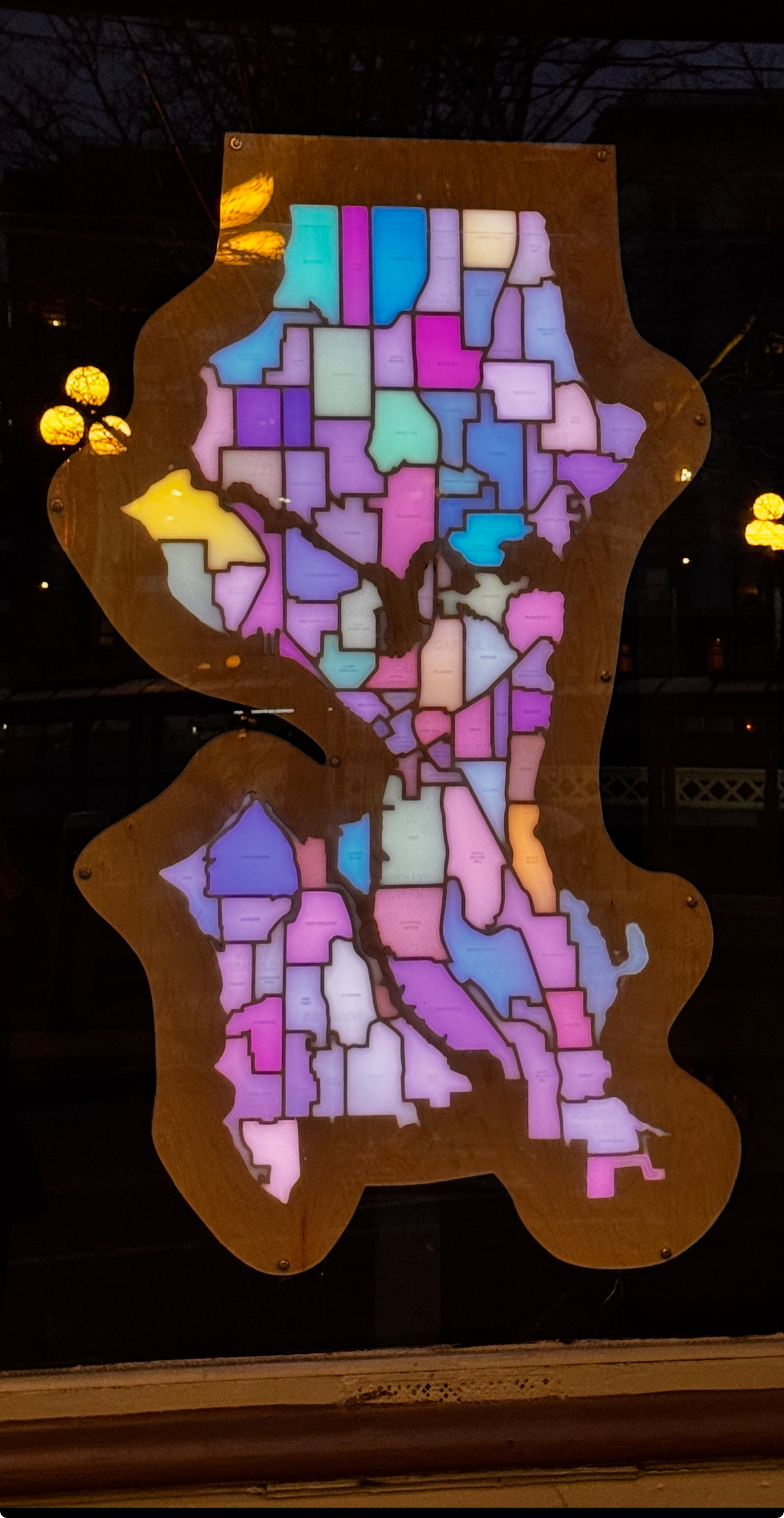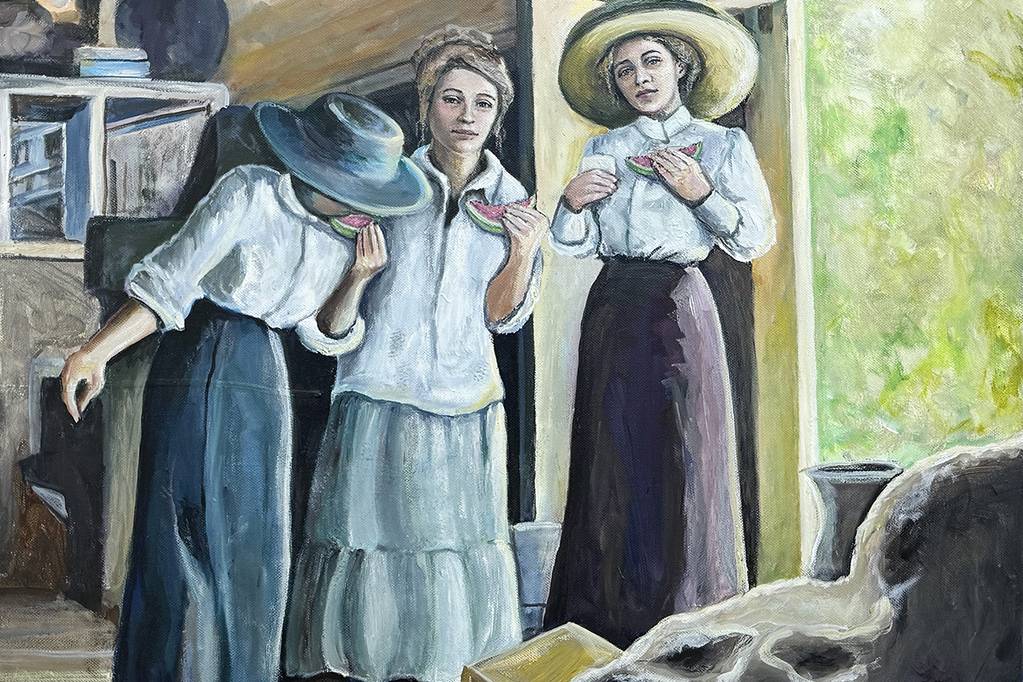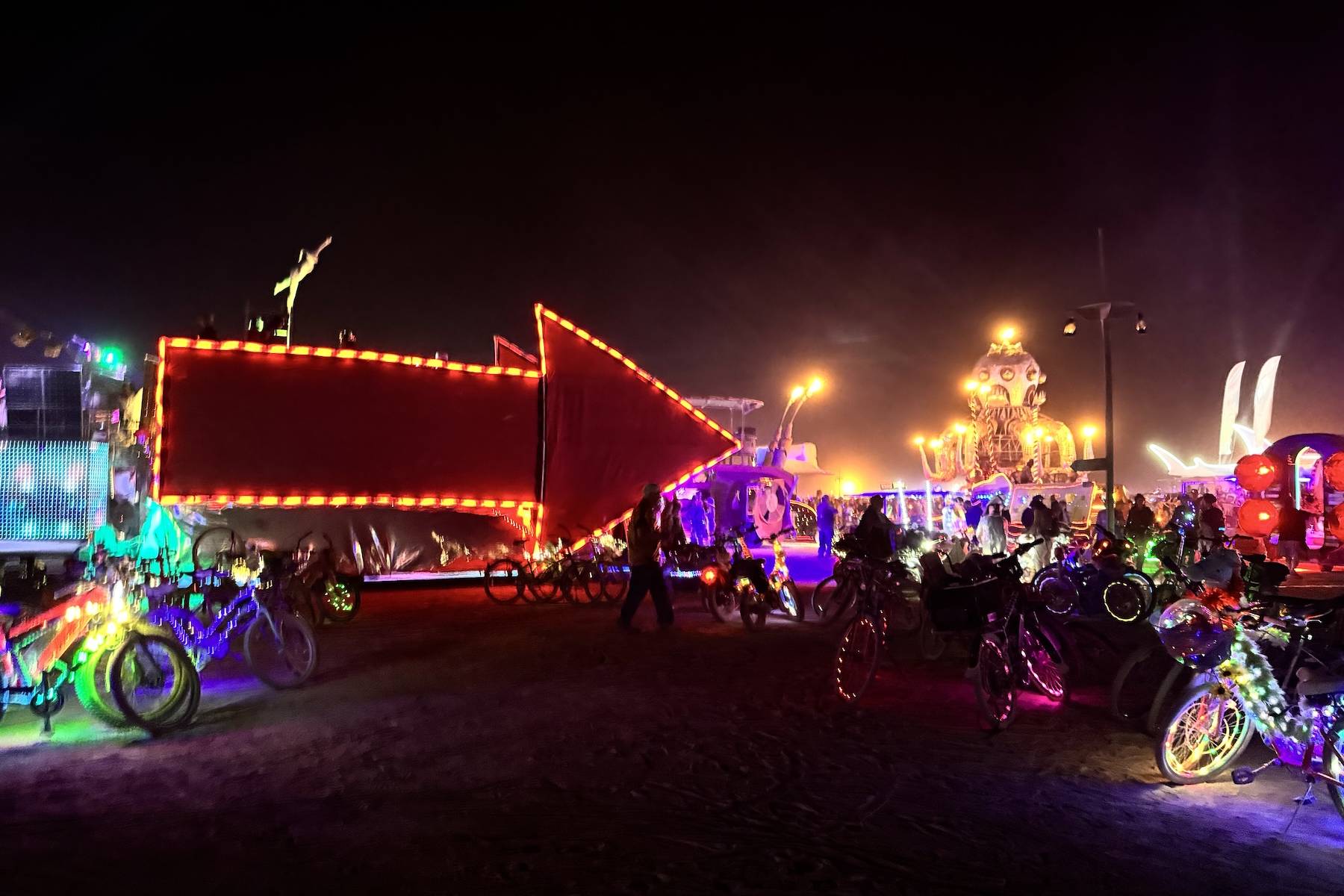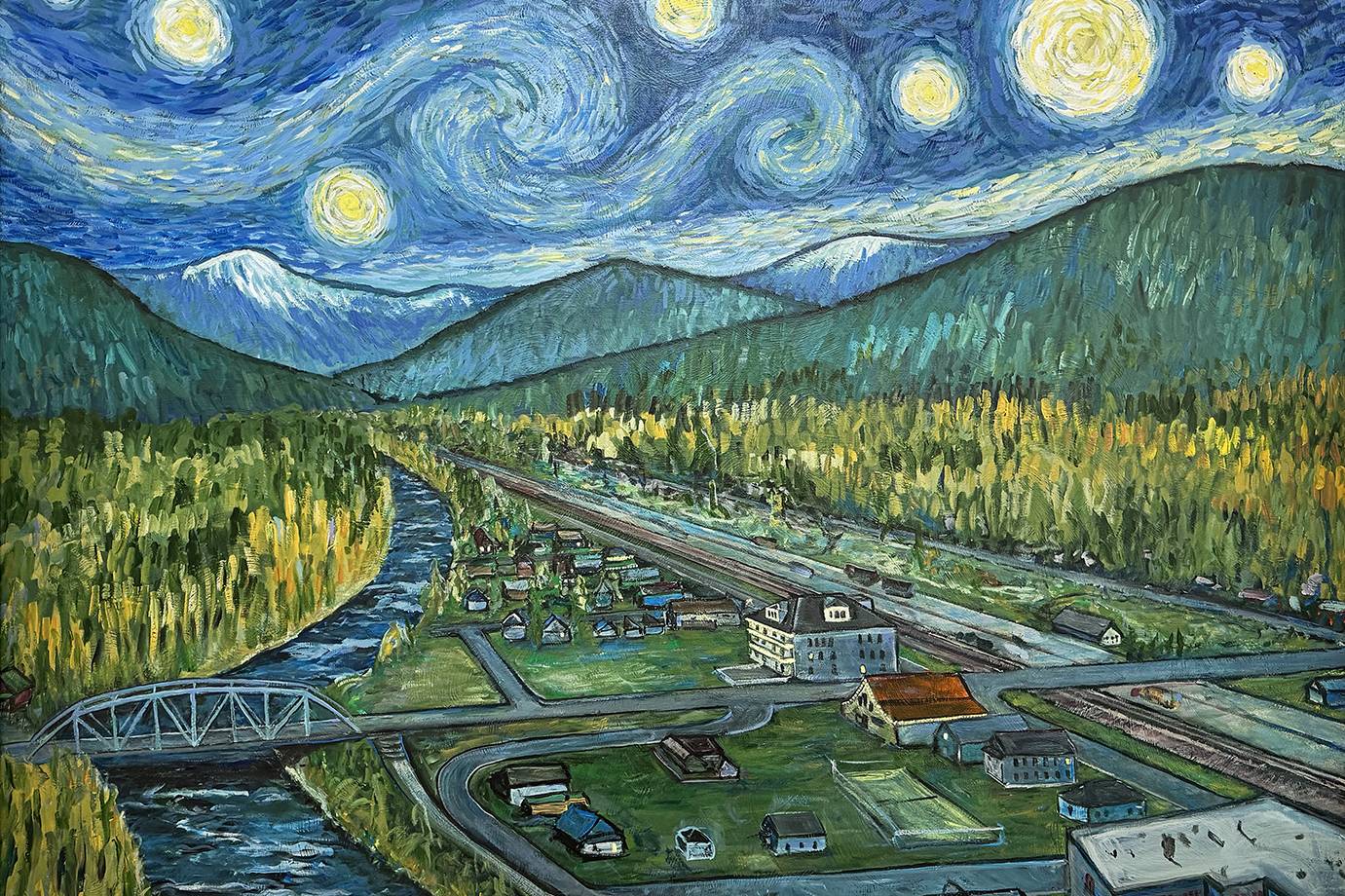What makes a strong community, you might ask? Dr. Shelly says in strong communities, people regularly interact and communicate, develop trust in each other over time, converge on shared goals, and then work collectively to achieve those goals.
In neighborhoods, many factors can influence the growth of a strong community, and we highlight a few for this installation. One important factor is that there are public, centrally located places for people to transition from “familiar strangers” to friendly neighbors including parks, or community spaces such as coffee shops, restaurants, libraries, and bars. Another important factor is that people can live and work in the same neighborhood, signified by how many people walk to work, or the density of the neighborhood. Conversely, another variable is that people feel safe walking in the streets, but more urban neighborhoods with higher density tend to have more violent crime. Wealth matters, providing increased access to resources and free time, but it is not always about a community’s wealth. In some well-off “bedroom” communities neighbors never meet because they lack shared community spaces and many commute for work. In fact, some of our less wealthy neighborhoods have a strong sense of community, with thriving public spaces, known for people pulling together to help each other when times are rough. Diversity of any kind (across race, gender, age, lifestyle, income) is a complex question – diversity can both improve a community’s well-being where there is an inclusive culture, or it can lead to discord when there’s lack of trust and inclusion. Again, to benefit from diversity the important thing is to have an inclusive culture, where everyone feels welcome, safe, accepted, and trust that their voice is heard.\\
The visualization animates slowly through data representations so allow the observe to develop a sense of their relationships over time. A an animated key shows the current representation. Data sources for this project include the City of Seattle’s Open Data Portal, and U.S. Census Data. All data was scored on a range from 1 = lowest, or 100 = highest. Measures were also normalized by size of neighborhood population where appropriate or for “parks” by percent of square footage of the neighborhood.
Community Spaces:

Violent Crime:

Economic Prosperity:

Located at 220 S Jackson Street, Seattle:











